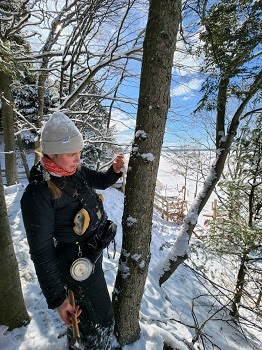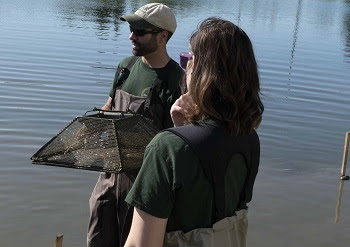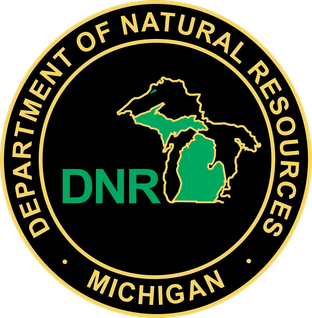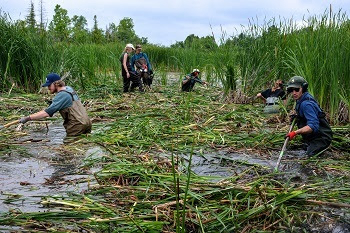The program – cooperatively implemented by the Michigan departments of Agriculture and Rural Development; Environment, Great Lakes, and Energy; and Natural Resources – addresses prevention, detection, eradication and control of aquatic (water-based) and terrestrial (land-based) invasive species in Michigan through four key objectives:
- Preventing the introduction of new invasive species.
- Strengthening the statewide invasive species early detection and response network.
- Limiting the spread of recently confirmed invasive species.
- Managing and controlling widespread, established invasive species.
This year’s grantees have offered $532,300 in matching funds and services to support these projects, leveraging a total investment of $4,132,300.
Expanding prevention, detection and management
Grant funds will support several early detection and response efforts for watch list invasive species:
-
- Continuing survey and treatment of hemlock woolly adelgid in Oceana, Mason, Benzie and other counties along the Lake Michigan shoreline.
- Surveying and creating “trap trees” for spotted lanternfly across the Huron-Clinton Metroparks in Oakland and Macomb counties.
- Refining the potential for early detection of didymo (rock snot) using environmental DNA and testing environmental variables that may lead to stalk-producing “blooms.”
- Coordinating red swamp crayfish surveys across the Clinton and Rouge river watersheds.
- Initiating outreach and monitoring for watch list tree pests and diseases on the Pokagon Band of Potawatomi Indians’ tribal lands.
- Treating known locations of mile-a-minute weed and expanding surveys in the vicinity of Albion in southwest Michigan.
- Coordinating Himalayan balsam survey, removal and outreach across the Upper Peninsula.
Funding also will support efforts to prevent the spread of invasive species:
-
-
- Testing the effectiveness of household cleaners to decontaminate waders, boats and equipment exposed to didymo and New Zealand mudsnails.
- Training paddle sport enthusiasts to decontaminate boats between uses and to look for and report aquatic invasive species.
- Spreading the “Clean, Drain, Dry” message using a mobile boat wash at popular boating access sites in southeast Michigan.
- Evaluating nitidulid beetle and oak tree cycles in the Upper Peninsula to better predict risk periods for spreading oak wilt.
Support in every Michigan county
This year’s grants also support 21 regional cooperative invasive species management areas, the network of partnership organizations working to manage and control invasive species and provide service to all 83 counties in the state. CISMA projects include enhanced education and outreach, technical assistance to landowners, and survey and treatment of high-priority invasive species.
Program background and progress
| In 2014 the state Legislature designated $5 million in annual funding to address invasive species. This support substantially enhanced Michigan’s Invasive Species Program for aquatic organisms, supported a formal program for terrestrial species and initiated the Michigan Invasive Species Grant Program.
This cycle marks the ninth year of program funding. To date, over $32 million has been awarded to support 238 projects undertaken by units of government, nonprofits and institutions. Because of this program: |
-
-
- More than 592,000 acres of land and water have been surveyed for invasive species.
- More than 51,000 acres have been treated for invasive terrestrial and aquatic plants.
- Through direct contact, including face-to-face interactions at boat washes, workshops, trainings and other events, 292,000 people have been reached with information about invasive species.
- An additional 41 million people were reached through grantees’ “passive impression” efforts, including mail, newspapers, social media and handouts.
Over $5 million requested
The program began accepting grant applications for this funding cycle in September 2022. A total of 42 applications were received, requesting approximately $5.1 million in support. Grant applicants were asked to commit to providing at least 10% of the total project cost in the form of a local match.
The full list of grant recipients, project descriptions and award amounts is available on the Michigan Invasive Species Grant Program website at Michigan.gov/MISGP.
Michigan’s Invasive Species Program is cooperatively implemented by the Michigan departments of Agriculture and Rural Development; Environment, Great Lakes and Energy; and Natural Resources.
Contact: Erin Campbell, 269-300-9698 or Joanne Foreman, 517-284-5814 |








